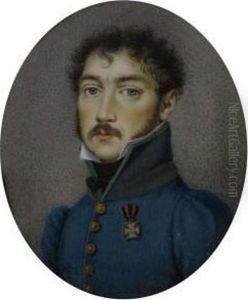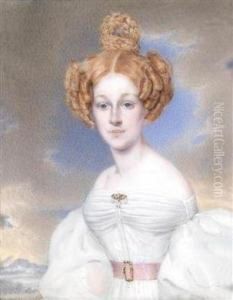Carl Von Saar Paintings
Carl von Saar was an Austrian portrait painter born on May 23, 1772, in Vienna. His full name is Carl Wilhelm Christian von Saar, and he is sometimes referred to as Karl von Saar. Coming from a time when European art was undergoing significant changes, transitioning from Rococo to Neoclassicism and then to Romanticism, Saar's work was primarily influenced by the latter two movements.
Educated at the Academy of Fine Arts Vienna, Saar developed his skills under the guidance of renowned artists such as Heinrich Friedrich Füger, who was a classicist painter, and this classical training is evident in the structured composition and poised elegance of Saar's portraits. His career began to flourish in early 19th century Vienna, where he became a sought-after portraitist amongst the nobility and the rising bourgeoisie.
Saar's portraiture is characterized by its detailed representation of his subjects, often highlighting their social status and character through careful attention to clothing, posture, and setting. His works are known for their clarity, realistic depiction of textures and materials, and the subtle psychological depth he imbued in the faces of his sitters. Unlike some of his contemporaries, Saar did not indulge in heavy romantic sentimentality but maintained a level of reserved dignity in his representations.
During his lifetime, Carl von Saar achieved significant recognition and was appointed as a court painter. His portraits were appreciated for their refinement and contributed to the documentation of the appearances and fashions of the Viennese elite during his time. He continued to work and influence the art scene in Vienna until his death on July 29, 1844.
Saar's legacy is preserved in the form of his extensive body of portrait work, which remains an important part of Austrian art history. His paintings can be found in various museums and collections, serving as a window into the era's aesthetic preferences and cultural milieu. Despite not being as widely known as some of his contemporaries, Saar's contribution to the portrait genre is recognized among art historians and connoisseurs of the period.


